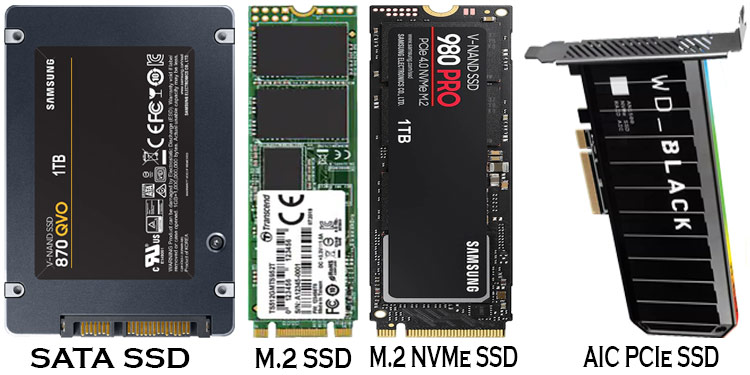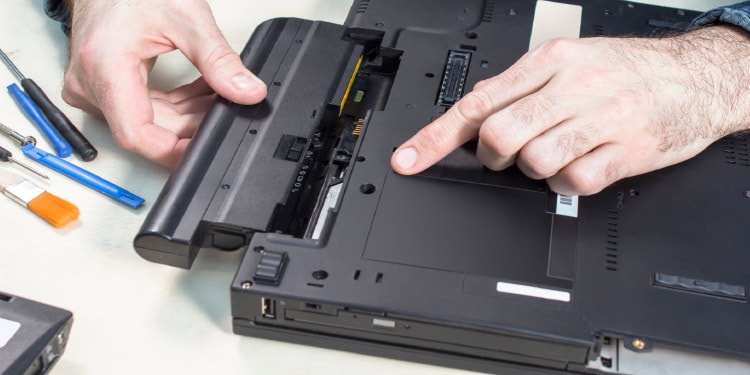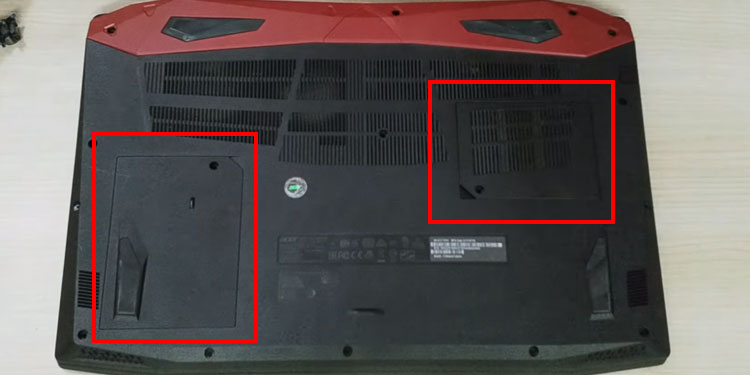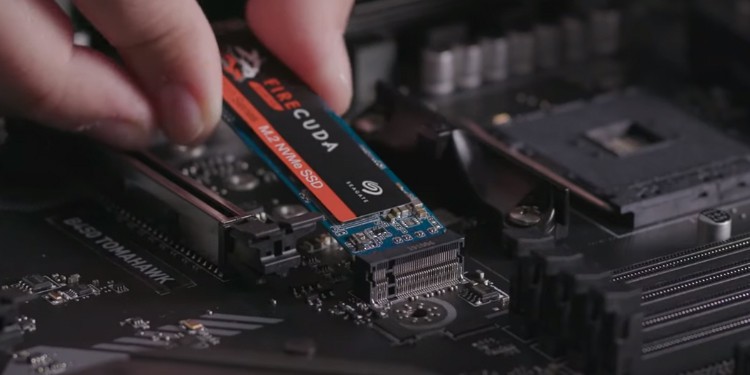You just need an SSD compatible with your system, install a functioning OS and replace the HDD. And Boom! You will have a relatively faster PC. This article will guide you through the step-by-step process of choosing and upgrading your laptop with a compatible SSD.
What is an SSD and Why Go For It?
Solid State Drives use electronic circuits and transistors to write and access information on the storage array. However, an HDD writes on a magnetic layer using an actuator over a spinning disk. In short, an SSD works through the movement of electrons without any moving parts, while an HDD operates by an electromechanical function. The speed of the CPU becomes redundant due to the latency of an HDD caused by its mechanical writing. But the SSD can transfer information at an extremely fast speed and overcomes the latency problem as it solely works through electronics. So, with an SSD, the CPU can extract the information immediately and utilize all its capacity making your system a beast. Apart from this, since there are no moving parts on the SSD, there is less noise and lowered risk of damage during falls. In the same way, the dropping price of SSD with even higher storage capacity makes it an optimum choice.
How To Upgrade Your Laptop With an SSD?
It does not require much to replace your Hard drive with an SSD. Once you get your hands on a compatible SSD, you just need to copy your data and disassemble your laptop to install it. So, let’s not delay anymore to find the right SSD for you and assemble it on your laptop.
Choosing the Right SSD
Since an SSD costs comparatively more than an HDD, it is wise to choose one carefully. Your choice of an SSD depends on various factors; Connection type, Capacity, Form Factor, Power consumption, Durability, and Price. We are going to discuss each of the parameters briefly.
Connection Type
An SSD must be connected to your laptop’s motherboard and power supply to operate. There are different kinds of SSD available with varying connection types. One of the most common types of SSD uses the traditional SATA connection. It is similar to the one you use for a Hard drive. Hence, you can always go for the SSD with a SATA connection. Doing this will cost you less and save you from the unnecessary hassle of finding other ports. There are two types of SSD that use the PCIe connection protocol: M.2 NVMe SSD and Add-in-Card (AIC) SSD. This SSD is much faster than the SATA drive due to the faster PCIe buses. The AIC SSD looks like a Graphics Card and is much bigger with higher storage capacity. These SSDs use the PCIe slot for operation. M.2 NVMe SSD is similar to RAM but smaller. Even though they use PCIe protocol, these SSDs can be connected to the M.2 Slot. You can find another type of SSDs, the M.2 SATA SSDs, that can be connected to the M.2 Slots. But these use the SATA connection protocol and are quite slower than NVMe SSD. Most modern-day laptops provide an M.2 Slot that runs through SATA and PCIe connection. You should check the specification for your laptop to see if it has the PCIe or M.2 Slots. But if you use a system such as some iMacs, then your system will have an already attached SSD. You are out of luck here.
Form Factor
Form Factor means the size of the SSD. If you have a compact laptop with an M.2 slot, it is best to get an M.2 SSD as these are smaller. However, If you buy a PCIe SSD, then the form factor does not matter much. But, if you are going for a SATA drive, you will have to look at the size of the space in your laptop where you place the SSD. Normally, your HDD is of 2.5-inch size. So, you can easily get an SSD of the same size with no hassle. However, if the frame is for a 3.5-inch HDD, you will have to buy a 2.5 to 3.5-inch mounting adapter. You can also remove the CD/DVD drive and insert the SSD in older laptops. In that case, you will need another mounting adapter similar to CD/DVD drive’s shape that can fit the SSD.
Storage Capacity
The SSDs come with a different storage capacity similar to the hard drive. Commonly, you can choose a 128 GB, 256 GB, 512 GB, and 1 TB storage capacity to store your files. However, you can also find some SSDs of 2 TB and more storage capacity, especially for server-side needs and research work. Ultimately, it is your choice, and you should choose the one that will satisfy your needs. We recommend an SSD of 256 GB and higher. You can also take the alternative option of using a 128 GB SSD to incorporate the OS and an HDD to save other files.
Power Consumption
Desktop users do not have to worry about the power consumption by the SSD as their system is powered directly. However, for a laptop user, and especially if you are concerned about your battery backup, we advise you to go for the SSD that needs less power. The SSD working on the NVMe drives requires much more power than others. Similarly, a higher storage SSD will consume more.
Durability
Any SSD will be durable enough for a normal user to sustain your needs. Similarly, if you love upgrading your hardware in a few years, then you can get one with higher performance. You probably won’t care about durability. But if you want your SSD to run for a long time, then we suggest you go for an SSD that uses Single-Level Cell or Triple-Level Cell flash memory. The Triple-Level Cell type memory might be quite slow but is durable. Similarly, SLC-type memory has both faster performance and durability but costs a lot. Similarly, we would not recommend you the one using Quad-Level Cell flash memory as these are not quite durable.
Budget
Everything comes down to the cost in the end. If you are on a budget and just need a little performance boost, you can get any SSDs. Replacing the HDD with an SSD can make your system significantly faster. Just make sure not to be lured by cheap ones and check every specification to choose the optimum one. If you need good performance and still remain on the budget, you can get a low-storage SSD of high quality and use your HDD on the side for additional storage.
Preparing Your Laptop For an SSD Upgrade
Now that you have chosen the right SSD for your laptop, you would want to transfer all the files from your SSD to it. You can connect it with a SATA USB connector, install the windows, and copy all the files manually. However, there is a much easier way: Cloning. Cloning the storage drive basically means creating the exact replica of it onto another drive. Cloning will create a ready-to-use drive without the need to make it bootable. But make sure to have the SSD of equal or greater storage capacity than your older drive’s partition. You can clone your storage drive to the SSD using free and reliable tools. But, you may need different methods for cloning laptops of different brands such as windows and Mac. So, we have created a separate guide on how to clone the storage drive to make it easier for you.
Installing the SSD Into Your Laptop
Behold, we have reached the stage of physically upgrading the Solid State Drive into your laptop. To do this, you will need a screwdriver compatible with the screws of your laptop, connectors if necessary, and the correct steps to disassemble and reassemble. Let’s incorporate the SSD into your laptop now that you have cloned your older drive to it.
Drain the Power From Your Laptop
You first need to drain all the power from your laptop to ensure no short circuit would occur. You can do this by following the steps below:
Remove the Cover
In some of the laptops, you do not have to open the entire laptop cover to access the storage drives. They have a separate small covering for storage drives and RAM. In such cases, you can simply take the screwdriver, unscrew the particular nuts, and retrieve the ports. If you have a laptop that needs a complete opening of the back, please follow the instructions below:
Remove the Existing Drive
You need to find and remove the existing storage drive to install the SSD. Here are the steps to perform the removal.
Install the SSD
It is now time to insert your SSD into the respective port. Let’s look at the important steps to follow.
Power Up the System
Now, Let’s power up the system and see if we succeeded in upgrading your system with an SSD. Enjoy the newfound fast performance of your laptop using the SSD.










